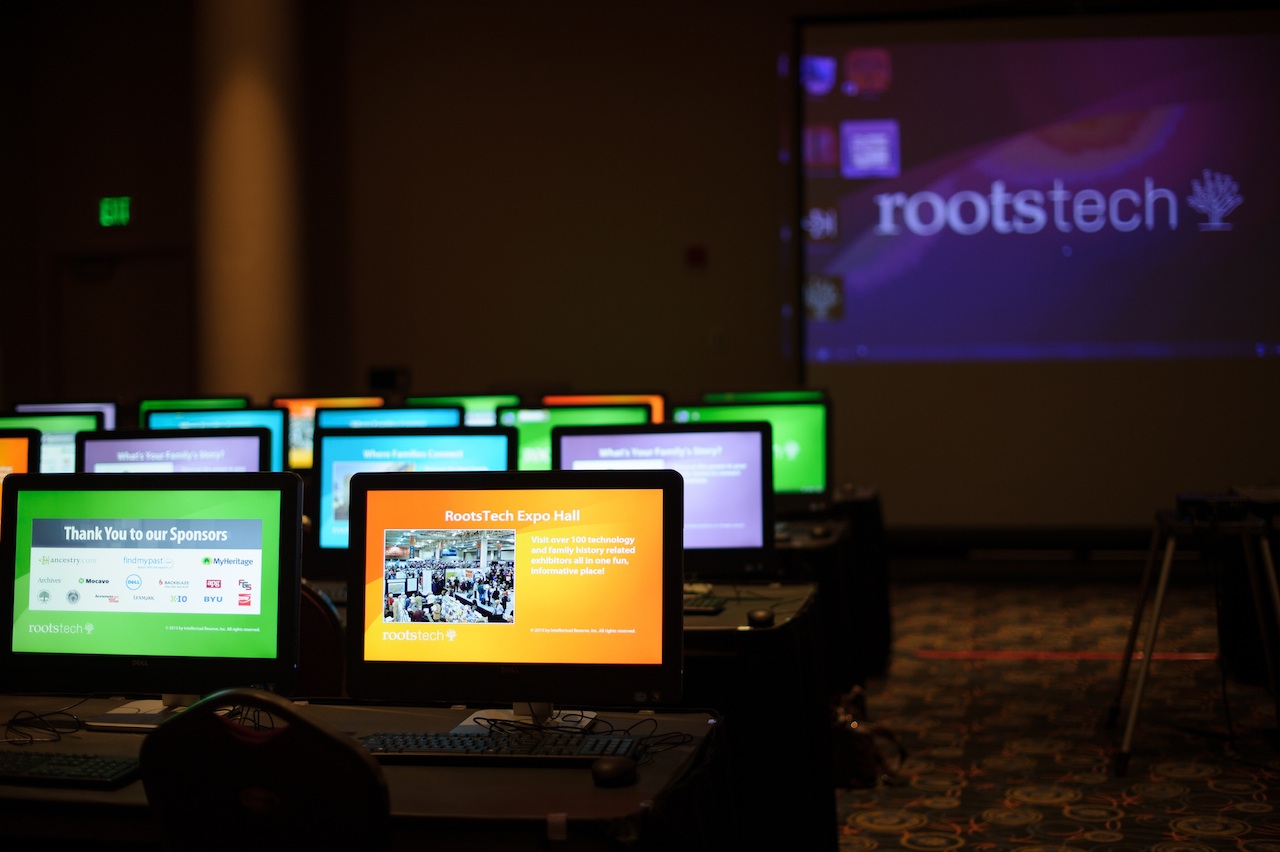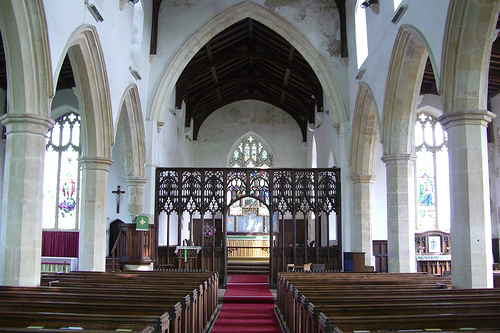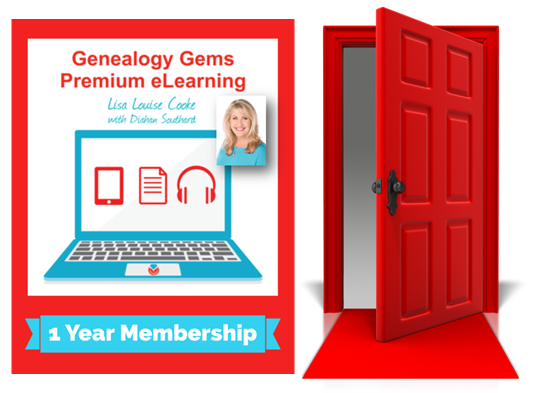by Lisa Cooke | Aug 28, 2013 | 01 What's New, Conferences, RootsTech, Technology
Registration is now open for RootsTech 2014, which will be held February 6-8, 2014 at the Salt Palace Convention Center in Salt Lake City, Utah. Here’s all the info hot off the press including links that reveal classes and computer labs plus a coupon code you can use for early bird pricing:
This annual family history conference, hosted by FamilySearch, is a unique global event where people of all ages learn to discover and share their family stories and connections through technology. Over the past three years, RootsTech has grown in popularity with attendees to become the largest family history event in the United States!
 Whether attendees are just beginning their family history, an avid hobbyist, or an experienced researcher, RootsTech has something for everyone:
Whether attendees are just beginning their family history, an avid hobbyist, or an experienced researcher, RootsTech has something for everyone:
- Classes and Computer Labs —Over 200 classes and computer labs taught by knowledgeable experts and enthusiasts in family history.
- Getting Started Track —A track of over 30 classes designed to help beginners start their family tree. Passes start at only $19.
- Developer Day —A preconference event on Wednesday, February 5, for developers to innovate and collaborate with other engineers and family history industry experts.
- Expo Hall —A huge expo with over 100 informative vendors and interactive booths where attendees can record a family story, scan a book or photo, or create a visual family tree.
- Family Discovery Day —New! A day of free inspirational classes for members of The Church of Jesus Christ of Latter-day Saints to learn more about strengthening family relationships across generations through family history.
Pass Pricing and Discounts
Various pass options are available, with pricing set to make RootsTech an affordable experience. Early Bird pricing discounts for a Full Access Pass ($159) and a Getting Started Pass ($39) are available until January 6, 2014.
An additional $20 discount is available for a limited time. Attendees can get a Full Access Pass for just $139 simply by using the promotional code RT14EXCLSV before September 9, 2013.
To get more information and register, visit rootstech.org.
I’ll be there conducting a brand new computer lab: Flipboard for Genealogy: Create an Incredible Mobile Magazine of Your Favorite Genealogy Web Content
NOTE: Computer labs fill up VERY fast so don’t delay!
Also look for my other classes:
- Panel Discussion: Self-Professed Uber-Organized Freaks Talk Genealogy Tech Organization
- Become an iPad Power User
- How to Use YouTube for Family History: Setting Up Your Own YouTube Channel
by Lisa Cooke | Sep 24, 2013 | 01 What's New, History, Inspiration, Maps
If your ancestors lived or worked in New York City, did you know you can follow them home from work? At least virtually.

New York City Subway History
David Pirmann runs a website dedicated to the history of the New York City subway system. NYCSubway.org includes great historical background, photos, maps and other documents.
Start by reading about elevated rail service that began in the 1860s and the development of the transit system since then. Then consult route maps for several time periods, either in the Historical Maps section or the Line by Line Guide (both under the Maps and Stations tab).
The fun part is browsing the rest of the site: learn how “The Great White Hurricane” snowstorm of 1888 paralyzed the city, or how things have worked behind the scenes (fares, power, signals, etc). You can even check out images of abandoned stations and old cars.
Thanks to Gizmodo.com for an article that pointed me to this fun resource.
by Lisa Cooke | Sep 23, 2013 | 01 What's New, FamilySearch, Organization, Photographs
FamilySearch users have created one of the largest family photo albums in the world in record time: one million images in just under five months. That’s a lot of pictures upload, tagged, linked to relatives and now just waiting for us to go in and snag copies.
Why the massive response? Pick your favorite reason:
- uploading photos from your computer, smart phone or tablet is easy;
- If you post a photo, you can share a direct link through Facebook, Twitter, Google+, Pinterest or email;
- pictures are publicly available to anyone (with or without a FamilySearch account);
- you can caption pictures and tag subjects to link them to their profile in FamilySearch’s family tree;
- you can collaborate with other descendants to identify everyone in a group photo;
- the site promises free online storage of your digital images forever (“. Every photo is backed up with a redundant system and preserved in state-of-the-art archive facilities”).
If you have a tree at FamilySearch (which is free), you can easily click to see what pictures others have uploaded of your relatives. Just log in, click Photos, then Find Photos of your Ancestors.
FamilySearch offers these tips for sharing your photos on their site:
“If you don’t have a traditional scanner, you can use your cell phone. Just take a picture of your family photos, use the browser on your phone, and go to FamilySearch.org. Then click on Photos, and proceed from there.
If you know photos that exist of your ancestors but belong to other family members, contact these relatives and ask them to publish the photos to your family’s tree, or set a date to scan or take pictures of their collection. You can also send out a request for family photos over social media to your relatives. If there are family heirlooms (photos, furniture, bric-a-brac, letters, mementos, medals), take pictures of them and upload the photos to the profiles of your ancestors in the family tree. Then stories can be added by anyone to support the photos and describe them. These photos and stories will become keepsakes for everyone to have and will be preserved freely for future generations.”
Check out this 4-minute video on using Photos and Stories feature at FamilySearch, and you can contribute to the next million photos!
by Lisa Cooke | Dec 3, 2013 | 01 What's New, British, Church, FamilySearch
Over a million Church of England records from the county of Norfolk are among materials now indexed at FamilySearch.org.

Happisburgh church of St. Mary’s, Norfolk. Image by Martin at Flickr Creative Commons.
The collection includes bishops’ registers of baptisms, marriages and burials from the mid-1600s to the mid-1900s.
- Baptismal records may include the child’s name, date and place of baptism, parents’ names and residence, legitimacy status of the child, father’s occupation and minister’s name.
- Marriage records may include the names, ages, marital status and residence of bride and groom; date and place of marriage; fathers of the bride and groom and information on whether banns were published.
- Burial records may include the name, age, and residence of the deceased and the date and parish of burial.
The Church of England was a state-sponsored church. This helps genealogists because it means that most everyone who lived there (until the mid-1800s or so) is likely to show up in Church of England records. So if you had English ancestors who lived in Norfolk, take a look. These images have been online since 2010, but the new index makes them a lot easier to search!
by Lisa Cooke | Jan 7, 2014 | 01 What's New, Ancestry, DNA, Family History Podcast, FamilySearch, Organization, Photographs

No episode! But lots of good updates. Keep reading….
UNLUCKY Episode 13: Genetic Genealogy and Photo Sharing
Episode 13 of the original podcast reviewed genetic genealogy and photo sharing products that are either now longer offered or are outdated. This episode is not being republished with the series.
Fortunately, lots of advances have been made in both genetic genealogy services and photo sharing and tagging, and we’ve got lots of current resources for you.
Genetic Genealogy (DNA)
Start here where you’ll find answers to common questions, a free introductory video, and additional DNA resources
Next, listen to my interview with Dr. Turi King, who used DNA to identify King Richard III. That interview is on my Premium Podcast (available by subscription) and talks about what DNA can tell us–and what it can’t.
Another interview you might enjoy is with Bennett Greenspan from Family Tree DNA, featured in Premium Podcast Episode 92.
 (Not a Premium Member? Check out all the great membership benefits–including members-only premium podcast episodes, full access to the premium podcast archive for an entire year, video recordings of some of my most popular classes and even premium videos that teach you some of the most important skills for 21-st century genealogists.)
(Not a Premium Member? Check out all the great membership benefits–including members-only premium podcast episodes, full access to the premium podcast archive for an entire year, video recordings of some of my most popular classes and even premium videos that teach you some of the most important skills for 21-st century genealogists.)
Free Photo Sharing Resources
Flickr
Photobucket
In addition, remember that Ancestry.com, FamilySearch.org, MyHeritage.com and other genealogy sites have excellent photo-sharing services for those who don’t mind sharing their images with the public.
 Whether attendees are just beginning their family history, an avid hobbyist, or an experienced researcher, RootsTech has something for everyone:
Whether attendees are just beginning their family history, an avid hobbyist, or an experienced researcher, RootsTech has something for everyone:



 (Not a Premium Member?
(Not a Premium Member?